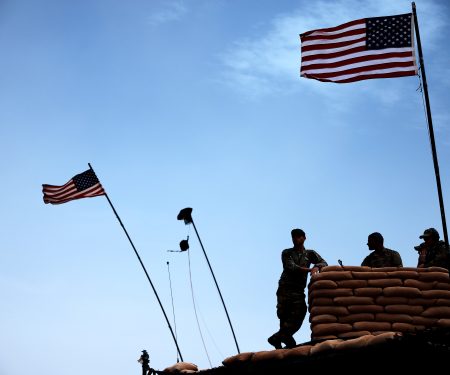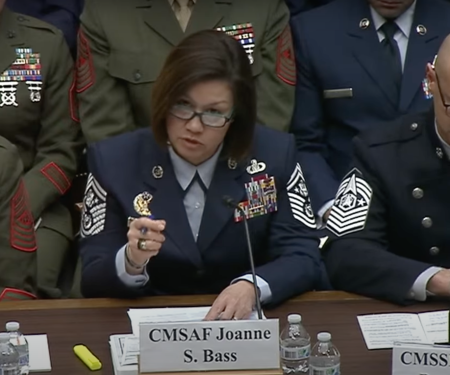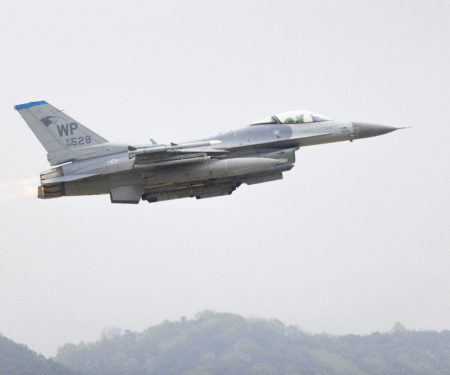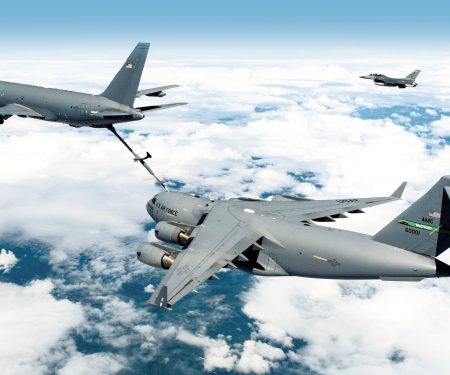Radar Sweep
Zelensky to Oust Ukraine’s Top General Amid Tension over New Mobilization
Ukrainian President Volodymyr Zelensky told his top commander, Gen. Valery Zaluzhny, that he was firing him in a meeting on Jan. 29, according to a senior official familiar with the conversation—a disruptive military shake-up amid Ukraine’s struggles on the battlefield and after months of friction between the president and the popular general.
Why Defense Contractors Are Saying No to Their Biggest Customer: The Pentagon
The Pentagon wants to develop advanced weapons systems to counter emerging overseas threats. Many defense contractors are avoiding projects that could turn into money-losers. The industry’s discontent has been brewing for months and reached a crescendo this past week when Northrop Grumman said it would take a charge of $1.2 billion building the first batches of the new B-21 Raider. The long-range bomber aircraft will be capable of carrying nuclear weapons and is a centerpiece of efforts to deter military actions from China and Russia.
Holistic Examination of the Next Iteration of US Cyber Command Underway
U.S. Cyber Command is in the midst of a holistic top-to-bottom review to reshape its organization and forces and ensure it’s best postured to deal with threats in a highly dynamic environment. Officials are dubbing the review Cybercom 2.0. “As we’re trying to look at the future of U.S. Cyber Command, I want to have a bold move forward,” Gen. Paul Nakasone, commander of Cybercom and director of the NSA, told reporters during a media roundtable at Fort Meade.
Senior Enlisted Leaders Tell Congress That Pentagon Should Learn from Civilian World
Sergeant Major of the Army Michael Weimer said that as a former “Army brat,” he remembers growing up in a pre-9/11 world where military installations didn’t have gates and fences separating them from the outside world. “We shut ourselves in for all the right reasons, and there’s still reasons to maintain some of that,” Weimer said. “It really changed the dynamics.” But Wiemer was one of six senior military leaders who told Congress Jan. 31 that quality of life issues as well as recruiting efforts could improve by bridging that gap between military bases and local communities.
High-Powered Microwave Weapon May Have Just Passed a Critical Test
The long-envisioned idea of using directed energy for air defense may have just crossed an important threshold. In a three-week series of tests run with the Air Force Research Lab, the experimental CHIMERA microwave managed to track and keep a high-powered beam on a variety of static and aerial targets, RTX announced Jan. 29.
Paperless Enlisted Promotion Tests to Roll Out in February
The Air Force is ready to begin rolling out online promotion tests for mid-level enlisted Airmen in February, the service announced Jan. 30. The long-awaited upgrade to a digital Weighted Airman Promotion System (WAPS) exam—a gauntlet of 100 multiple-choice questions that vet Airmen’s knowledge of their career field and the Air Force at large—is expected to cut the cost of testing and expedite grading, the service said.
Space Systems Command Weather Group to Review Requirements and Long-Term Plans
Over the next couple of months, the U.S. Space Force organization responsible for delivering weather information to Defense Department customers will take a hard look at weather data requirements. “We’re going back to our user community, effectively the Joint Staff, to make sure that we have the right prioritization,” Col. Daniel Visosky, senior material leader for the Space Systems Command’s Environmental and Tactical Surveillance Delta, said Jan. 29 at the American Meteorological Society conference.
Missile Defense Interceptor Competition Enters Critical Design Phase
Both teams competing to develop a new homeland missile defense interceptor for the Missile Defense Agency have entered the critical design phase with Northrop Grumman announcing it had passed its preliminary design review, according to Jan. 31 statement. The teams competing to replace the Ground Based Midcourse Defense (GMD) interceptors with a Next-Generation Interceptor, or NGI, have been working on staggered schedules. The Lockheed Martin and Aerojet Rocketdyne team completed its PDR at the end of September 2023.
Lawmakers to Pentagon: Do a Better Job Shooting Down Drones
House lawmakers have lingering questions over whether U.S. forces have adequate protection from Iran-backed militants in the wake of an attack in Jordan that killed three American troops. A bipartisan swath of the House Armed Services Committee left a classified briefing with Pentagon officials Jan. 31 with concerns over force protection, including the adequacy of counter-drone capabilities as U.S. forces in the Middle East suffer continued attacks.
After Historic Shoot-Down, Why Russia Will Struggle to Replace Its A-50 AEW&C Plane
Earlier this month British military intelligence officially confirmed the mid-air explosion of a Russian A-50U surveillance aircraft, which Ukraine says it shot down—in what would be the first downing of such an aircraft in the 21st century. The Jan. 14 downing of the A-50U, which was reportedly knocked out of the sky around the same time as an Ilyushin IL-22 combat control aircraft, came just days after the Brits said Russia was increasingly putting the command and control planes at risk to gather vital intelligence for targeting Ukrainian air assets and radar.
Refueling, Propulsion ‘Jetpacks’ Near Term Space Force ‘Mobility’ Plans
In the near term, the Space Force’s plans to implement dynamic space operations are focused on acquiring satellites that can be refueled and the means to do so, as well as propulsion units that can be strapped on to satellites that have run out of fuel, according to service officials. “We’re taking our cues from Space Systems Command,” Brig. Gen. Kristin Panzenhagen, Space Force program executive officer for Assured Access to Space, told reporters here today. “So that’s where prioritizing on-orbit refueling is coming from as the immediate need. You know, everybody’s focused on great power competition and making sure that we as a force are prepared to meet that.”
This Is What It Took to Defend a B-17 Bomber
With the first episodes of Masters Of The Air having received considerable praise for their air combat sequences especially, the story of the U.S. Army Air Forces (USAAF) in World War II is very much back in the public consciousness. In its initial review of the series, The War Zone noted its attention to detail, especially in the terrifying scenes of B-17s flying into flak or being attacked by Luftwaffe fighters. The combination of simulated concussive blasts, shrapnel, and machine gun rounds very effectively summon up the chaos of the daytime bomber offensive. Meanwhile, the frantic efforts of B-17 gunners to defend their aircraft from enemy fighters that seemingly press home attacks from every quarter are also a signature motif within this drama.



